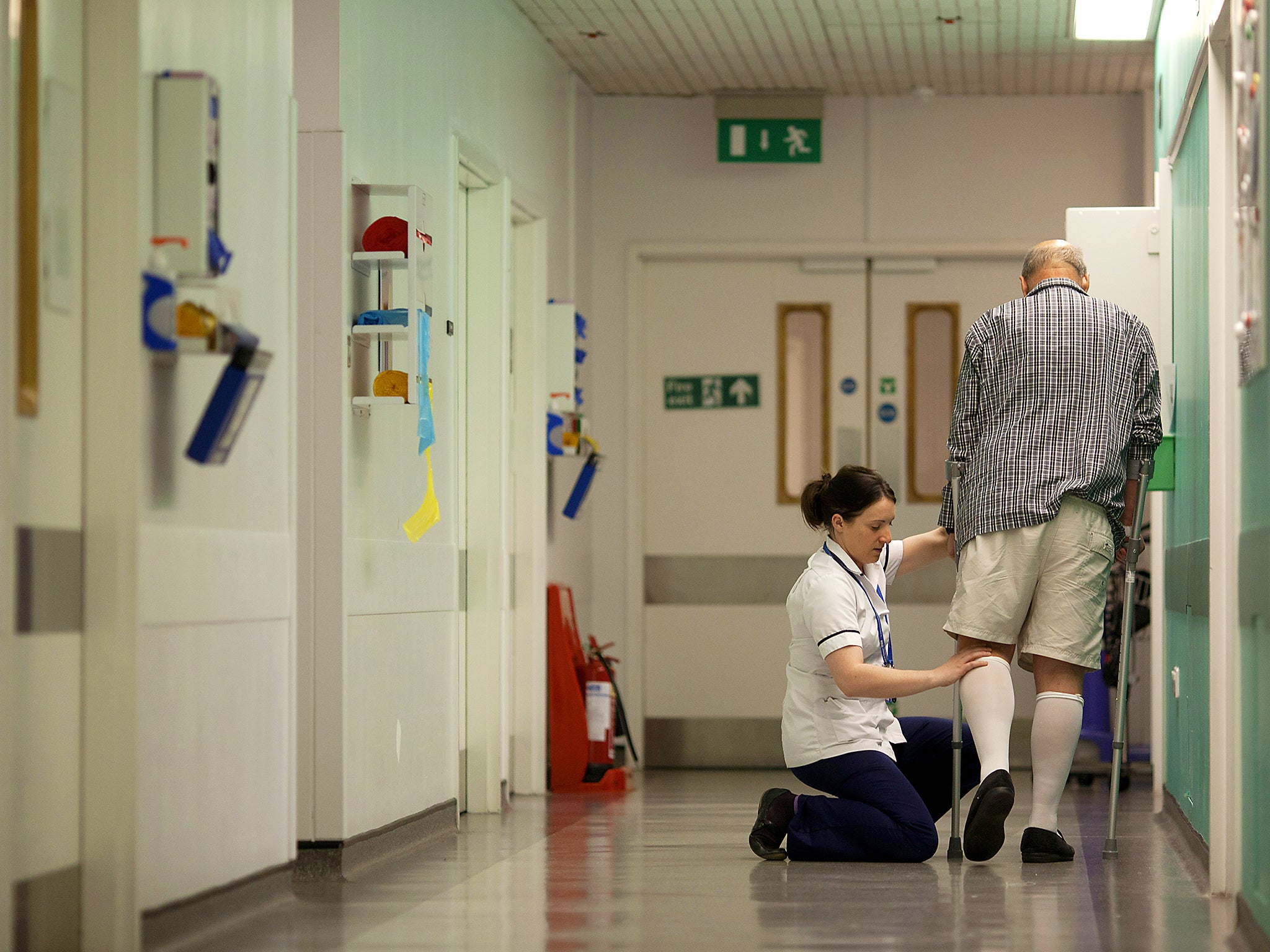A&E waiting times at NHS hospitals 'at record levels', leaked data suggests
Theresa May ‘cannot continue to bury her head in the sand’ as care worsens, says BMA chief

Your support helps us to tell the story
From reproductive rights to climate change to Big Tech, The Independent is on the ground when the story is developing. Whether it's investigating the financials of Elon Musk's pro-Trump PAC or producing our latest documentary, 'The A Word', which shines a light on the American women fighting for reproductive rights, we know how important it is to parse out the facts from the messaging.
At such a critical moment in US history, we need reporters on the ground. Your donation allows us to keep sending journalists to speak to both sides of the story.
The Independent is trusted by Americans across the entire political spectrum. And unlike many other quality news outlets, we choose not to lock Americans out of our reporting and analysis with paywalls. We believe quality journalism should be available to everyone, paid for by those who can afford it.
Your support makes all the difference.The Government has “failed to grasp the seriousness” of severe pressures faced by NHS hospitals, the British Medical Association has said.
Waiting times at A&E departments hit record levels in December, NHS England data showed, with the lowest percentage of patients seen within four hours since the target was introduced 13 years ago.
More than 60,000 seriously ill patients spent more than four hours waiting on trolleys in December – and provisional data leaked to the BBC suggest figures for January could be even worse.
Doctors have warned of worsening conditions in overstretched hospitals, said to be at breaking point due to overwhelming demand and bed shortages.
The Government’s target states that 95 per cent of A&E patients must be seen and either admitted or discharged in four hours, but in December just 86.2 per cent of patients waited four hours or less.
And of 1.4 million A&E visits in January, only 82 per cent were dealt with in the required time frame, according to a document prepared by regulator NHS Improvement and leaked to the BBC.
“The government have so far failed to grasp the seriousness of the situation. The Prime Minister cannot continue to bury her head in the sand as care continues to worsen,” said Mark Porter, chair of the British Medical Association council, in a statement.
“When social care isn’t available, patients experience delays in moving from hospital to appropriate ongoing care settings – preventing patients being admitted at the front end in A&E. These trolley waits are a desperate sign of a system under too much pressure,” he said.
“The government must urgently look at the long-term funding, capacity and recruitment issues facing the system as a whole if we are to get to grips with the pressures the NHS faces year in, year out, but which are compounded during the winter months.”
The leaked figures for January also reportedly suggest a record high for people waiting more than 12 hours in A&E departments to be seen.
In December 550 patients spent more than 12 hours waiting in A&E – up from last spring’s high of 349 in March 2016, but less than the 650 recorded in January 2015.
Chris Hopson, chief executive of NHS Providers, told the BBC: “These figures have not been verified and should therefore be treated with caution, but they are in line with the feedback we have been getting from trusts.
“NHS staff have responded magnificently to increased winter pressures, but the situation has become unsustainable. The rise in long trolley waits is particularly worrying, as there is clear evidence they can lead to worse outcomes for patients.“
Hospitals have not hit the target nationally since the summer of 2015.
A Department of Health spokesman stressed that the data for January was yet to be verified.
He said: “We do not recognise these figures – it is irresponsible to publish unverified data and does a disservice to all NHS staff working tirelessly to provide care around the clock.
“Despite the pressures of winter the vast majority of patients are seen and treated quickly and hospitals have detailed plans in place to manage busy periods – supported by an extra £400m of funding.”
John Appleby, director of research at health charity the Nuffield Trust, said the figures “paint a stark picture of the very real pressures facing NHS hospitals across the country”.
“The most striking statistic is that 61,000 patients were stuck on trolleys for more than four hours in December – the highest since these statistics were first published in 2010 and extremely worrying for patients and their families.”
At some hospitals overcrowding has reached such high levels that nurses are treating patients in corridors.
Janet Davies, head of the Royal College of Nursing, told The Independent the organisation had heard from “nurses across the country who are working in badly overcrowded hospitals, striving to give the best care they can in extremely difficult circumstances.”
“It’s an understatement to say that treating patients and holding what are often very personal discussions in a corridor is unacceptable,” she said.
Footage taken by the BBC showed patients waiting more than four hours to be seen at Royal Blackburn Hospital, where at one point last week 33 beds were available for 95 seriously ill people.
Join our commenting forum
Join thought-provoking conversations, follow other Independent readers and see their replies
Comments